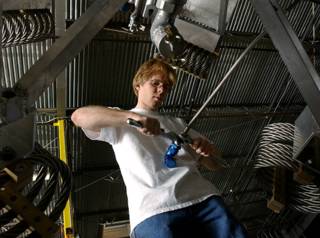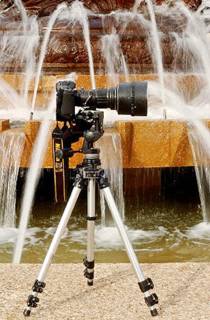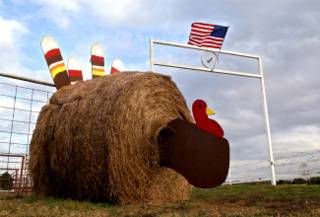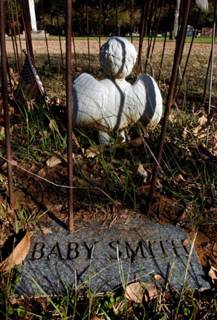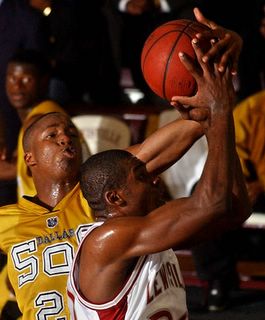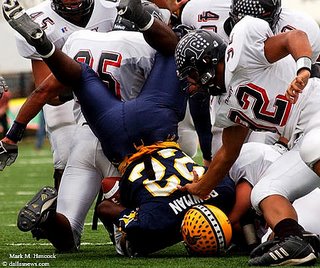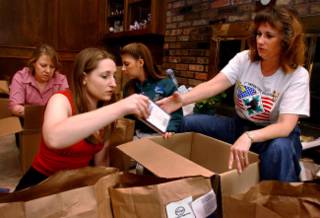Many people were never taught what editorial content is. They want to promote a legitimate news event or topic, but they don't know how - or worse - they wait until it's too late.
If you are confused: A ribbon cutting is NOT critical news. There is NO such thing as a fast-breaking spectator sport. I can NOT photograph something that happened yesterday. If you weren't a participant, would
you read a story about what you're promoting?
If the previous made you nervous, relax gentle readers. I'll explain how to get proper information into the right hands at the right time.
I wrote a huge entry about various journalistic justifications as a prologue to an explanation of how to submit a press release and get the media moving on something of interest to average readers/viewers. Luckily, it was eaten by a technical glitch before I saved it.
So, I'll go back to my original plan and simply state what the media people need to report a story (good and bad) to help or share joy.
5 Ws & HFirst, the reporters need to know the five Ws and H. These are:
1) Who (specific names and correct spellings)
2) What (brief but specific description in two sentences)
3) When (time, day, date)
4) Where (exact address and directions)
5) Why (what makes this story worth covering)
6) How (any addition information to hook the reader/viewers)
This information can be given to the reporters via e-mail or a press release (flyer). Although the information could also be called into the office, lead or follow the call with a fax or e-mail to make certain no misunderstandings or mistakes are made because of language variations (being pissed in England is far favorable to being pissed in America).
Keep the information simple, accurate and factual. A press release isn't an English essay. It's "just the facts." Keep the entire release below one page of text.
Contact informationNext, reporters need any and all telephone numbers, e-mail addresses, Web sites, and physical addresses involved in the story. Although most submitters don't want to do so, it's best to include this information for the opposite side of the story as well. By doing so, the reporter can get the full story without much additional research.
I must explain a part of journalism here. For there to be a story, there must be a conflict. The three major conflicts are (please consider "man" as gender neutral for "mankind"):
1) man vs. man
2) man vs. nature
3) man vs. him/herself.
Almost all stories from world wars to make-up tips fall into these three broad categories. By considering these conflict options, news tips are more compelling to reporters.
If the person submitting the story idea presents the conflict and contact information for both sides of the story, the reporter's story is easier to write. Since most reporters create at least one story per day (if not five), it's best to feed them the story. If the story info is easily obtained, the reporter is most likely to write the story to complete the daily quota and save reporting time for more complicated stories.
Check accuracyAbove all else, be absolutely certain each word is spelled properly, each number is correct and every fact is verifiable. If any of the above is incorrect, the source will always be viewed as questionable.
Journalism is a profession of accuracy and trust. The public trusts journalists to state the facts correctly. If this trust is violated, we lose credibility and the trust of the reader. This is completely unacceptable in this profession.
Get it to the right personWhen submitting a story idea. Make sure it goes to the correct person. This requires a minimum of research before submitting the story idea. Look at the publication or listen to some newscasts. Who is the writer or editor?
Once you determine a name, call to verify the info is correct and get an exact mailing or e-mail address for the press release. Reporters and editors are more likely to respond to information sent specifically to them rather than "To whatever typing monkey is on the desk tonight."
Actually, they will respond to the latter, but it's not exactly in the most desired manner. :-)
Give plenty of timeUnderstand timing. Timing is everything in daily news. If enough lead time isn't given to a reporter, the story collapses because reporters can't drop everything for whatever lands on their desks. Most reporters are buried in information daily. Your information must be accurate and easily understood to rise to the top of the pile.
Give as much time as possible for the reporter to research the topic and acquire interviews with key subjects.
This extra time also allows the reporter to talk with the photo department and arrange the best possible images to accompany the story. I may as well note here that the bigger the story is, the more likely it is to have photographs or informational graphics. The "art" quickly draws the reader to the story and helps it land a prominent place on the page.
With this in mind, remember that PJs can only photograph events in the present tense. Tomorrow's shoot can be considered, coordinated, planned and executed (tomorrow). However, there is no way to photograph something that happened yesterday.
Include quality artworkAs mentioned above, big stories get more newsprint real estate. Part of the equation is a graphic element (photos, graphics, maps, etc.). This is also
part of a reporter's job to either acquire or arrange for the graphic element.
If a press release arrives with quality graphic elements, the reporter's time was saved. The reporter may reward the sender with a big story.
Graphic elements need to be 1M or larger to reproduce well on newsprint. Obviously, the larger it is (without pixelating), the larger it
could run. If the graphic is particularly compelling, it'll get a reporter's attention because reporters also think like readers and
react to quality visuals.
Present visual options. Rather than submitting one photo or graphic, submit five and let the reporter choose. However, make sure the images are significantly different (they may run all five if it's a slow day). Otherwise, choose the best one and go with it.
Event organizers should consider hiring a pro photographer to help promote large events. If thousands or millions of dollars are being risked, a few hundred or thousand to get creative, meaningful images is money well spent. There are plenty of folks from around the world on the sidebar who can deliver the right images.
If the image is much larger than 1M and/or several images are submitted, put them on a CD and mail or deliver it to the newsroom. If high-res images are needed immediately, post them online in a secure location for download. They can be pulled down after the image is saved at the newspaper.
Include human interestA human interest story is one that appeals to readers' hearts. These stories make people say, "Isn't that nice," "That's so sad" or "Wow." If the human interest element also includes conflict, the story may move from the Lifestyles section to Page 1.
If an event is on the light side, consider teasing the reporter with a human interest story. I say teasing because the press release is only meant to get the reporter's attention. It isn't a full-blown story (that's the reporter's job).
If the human interest is compelling, condense it down to as few words as possible and include it somewhere easily found by the reporter. This shouldn't be more than one or two short sentences.
It can even lead the press release to ensure coverage. For example, "Bob Smith will open the XYZ event. Smith lost a leg after he carried a baby polar bear across Alaska to reunite it with its family."
This line would get
any reporter's attention. It elicits a long list of questions to hook the reporter. It states a real person challenged nature and himself - at great sacrifice - to save a rare, cuddly-yet-feared animal. It also states he's still alive for interviews. If you include his contact information in the press release and enough lead time, your event may make it onto the AP wire and in newspapers coast to coast.
Annual eventsIf the event is an annual event, understand it may not get great play the first year it's covered. A photographer will probably be assigned to get some images for this year, but the images are actually for next year's story. Likewise, this year's written story is background for next year's story. As the event grows in community popularity, the story evolves from year to year.
If at all possible, nail down the annual date. It's much easier to remember an event ALWAYS occurs on the 1st full weekend in April rather than on dates that change each year or some strange lunar/solar/tidal/committee cycles. This ensures the event is covered in subsequent years.
Enough for now,
